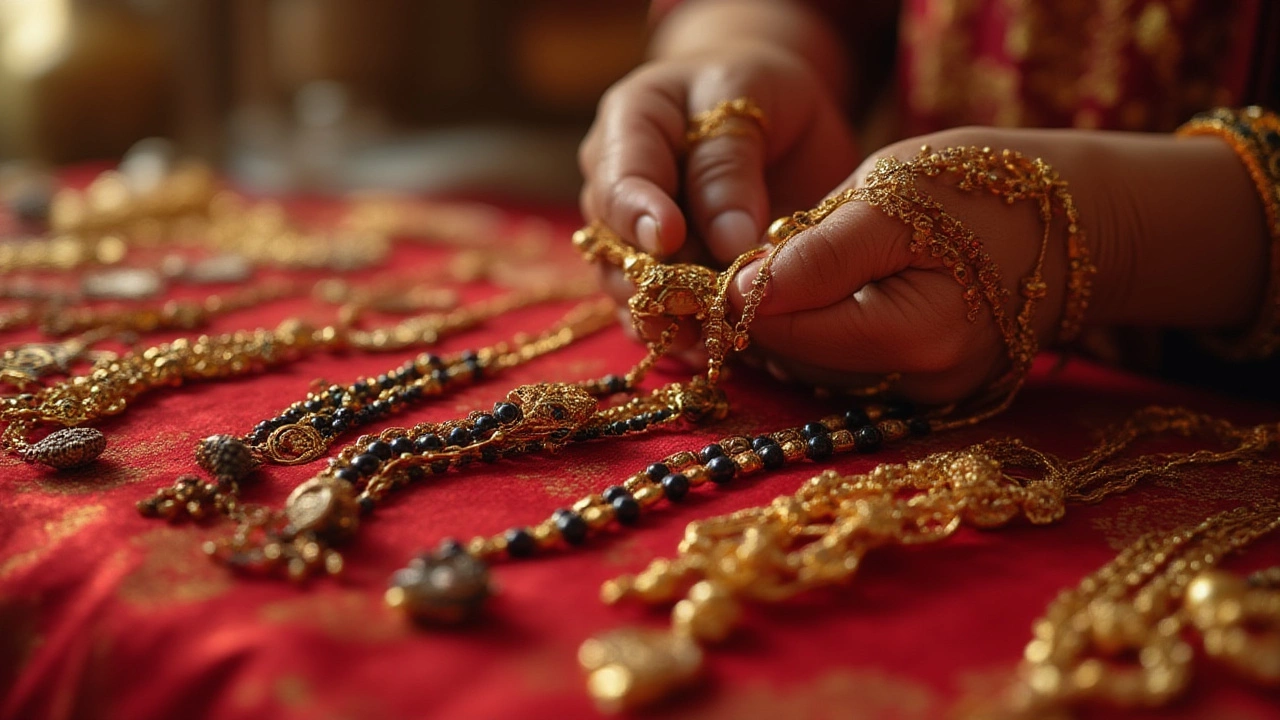
Explore how many beads should be in a mangalsutra, discover the symbolic meanings, bead counts, designs, and modern trends—get practical tips and interesting facts.
When talking about Mangalsutra design, the traditional marriage necklace that signals a woman’s marital status in India. Also known as marriage necklace, it blends symbolism, fashion and metal work into a single piece. The look of a mangalsutra is shaped by Gold purity, the karat level (typically 22K or 24K) that determines durability and shine, by Indian wedding customs, rituals that dictate who presents the necklace and how it’s tied during the ceremony, and by Regional styles, variations in chain patterns, pendants and motifs across North, South, East and West India. Together, these factors create a design language that’s both personal and deeply cultural.
Every mangalsutra tells a story. The core Mangalsutra design usually features a sturdy black or gold chain, a central pendant, and sometimes tiny gold beads. The pendant often carries symbols like a tiny Shiva lingam, a lotus, or a simple heart—each chosen for its spiritual meaning. Mangalsutra tradition, the practice of passing down designs through generations, influences the choice of motifs and metal weight. Modern couples also add gemstones such as diamonds or rubies for sparkle, but the design must still honor the original purpose: a durable, daily‑wear piece that survives years of use. When a design respects both aesthetic and ritual, it aligns with the broader world of Bridal jewelry, the ensemble of necklaces, earrings and bangles that complete a wedding look.
Choosing the right design means balancing personal taste with practical concerns. Gold purity is a major factor—22K gold offers a good mix of strength and richness, while 24K gives maximum purity but can be softer. The hallmark on the piece, usually marked as 22K or 916, guarantees authenticity. Gold hallmarking, the official stamping that verifies metal content and quality helps you avoid low‑grade imitations. Another consideration is the weight; a heavier chain may look impressive but can feel uncomfortable for daily wear. Finally, think about regional influence—South Indian designs may showcase intricate gold filigree, whereas Punjabi styles often favor a thicker, more robust chain.
Beyond the metal, the cultural context shapes how the mangalsutra is presented. In many North Indian families, the bride’s mother‑in‑law gifts the necklace, while in South Indian customs the bride’s own family may purchase it. Understanding who typically gives and ties the mangalsutra, as highlighted in our posts about wedding rituals, can guide you toward a design that feels authentic to your background. Whether you prefer a minimalist pendant or a lavish diamond‑encrusted piece, the key is to pick a design that respects tradition while matching your everyday style.
Now that you know what influences a mangalsutra design—from gold purity and hallmarking to regional motifs and wedding customs—you're ready to dive into the detailed guides below. Explore the articles for deeper insights on ideal designs, buying tips, and the cultural stories behind each style, so you can make an informed choice that feels right for you and your future celebrations.

Explore how many beads should be in a mangalsutra, discover the symbolic meanings, bead counts, designs, and modern trends—get practical tips and interesting facts.